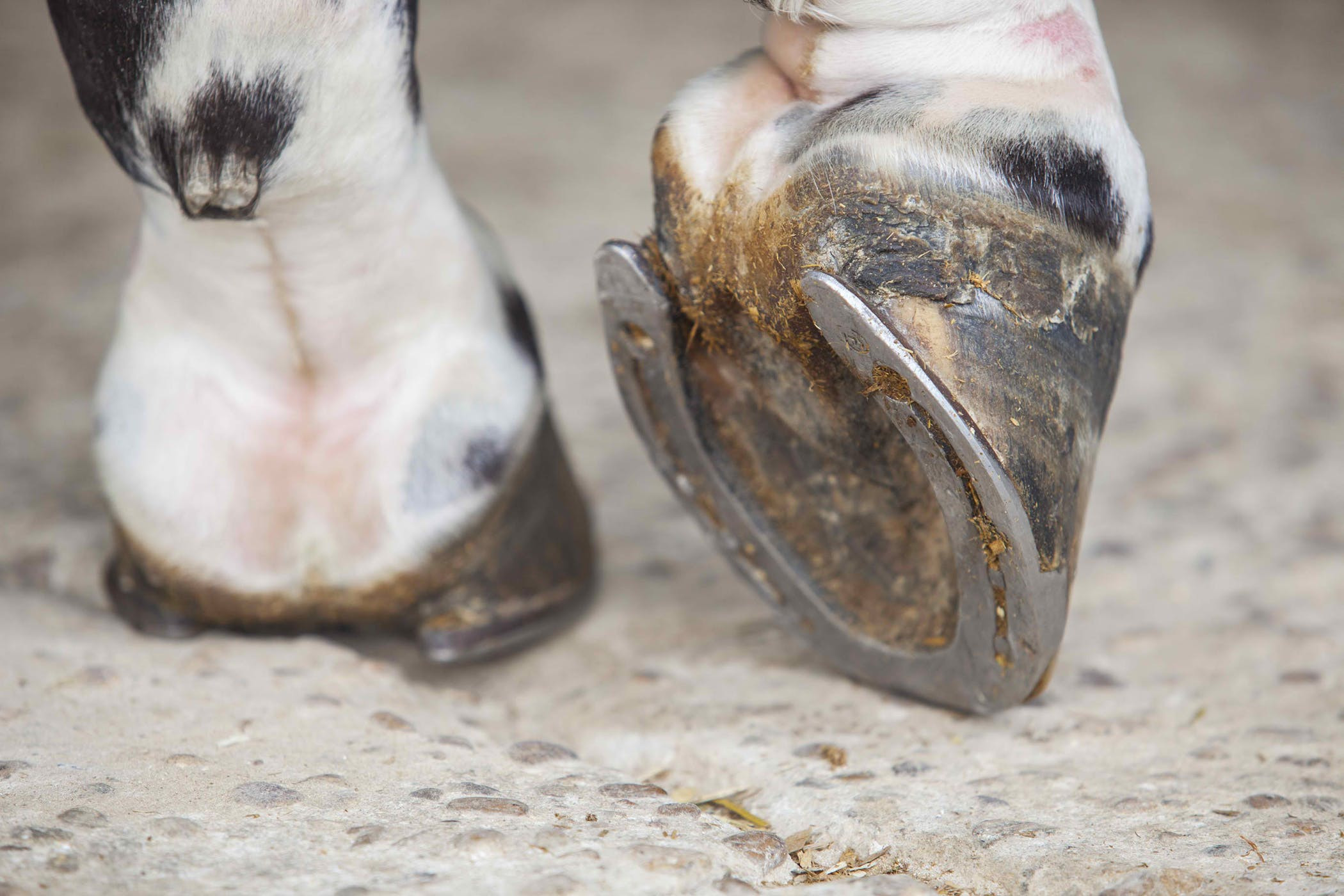The old saying ‘no foot no horse’ couldn’t be more true and this time of year we are seeing a lot of lame horses due to foot problems. It looks like the long dry spell has come to an end and with the wet weather brings inconsistent moisture levels for the horses’ hooves. It’s important that the horses hoof maintains a consistent moisture level, they can adapt very well to long dry periods like the summer we have just had or to constant wet like most of our winters. What the hoof struggles with is wet – dry – wet conditions like we are now experiencing.
When the hoof is exposed to moisture it expands and softens, whereas when it is dry it contracts. Changes in moisture levels mean the hoof wall is constantly expanding and contracting which can lead to loose nails, hoof wall cracks and foot abscesses. Even when it’s not raining with the dropped temperatures on a night there is more dew around on the grass which can cause excessive moisture of the hooves.
Here are my top tips to keep your horses’ feet in great condition ready for Autumn/ Winter:
1. Pick your horses’ feet out twice daily. Yes! This necessary and often skipped task will help remove all the small stones and bits of dirt that can work their way up the white line and cause foot abscesses. We’ve also seen an awful lot of maggots in horses’ frogs this year and by checking feet twice daily it means you can get on top of any problems much faster.
2. Use a stiff brush to brush the soles of the feet to remove tiny stones and dirt and the outer hooves to remove any mud that may prevent the hoof from breathing.
3. Make sure you have regular farrier visits even when the hooves don’t seem to be growing much like during the summer. In fact horses often benefit from a shorter shoeing cycle in summer. Long toes and unbalanced feet will increase strain on the foot which can cause cracking, bruising and lameness. Your farrier can also trim off excessive frog to prevent the risk of maggots!
4. Maintain a diet balanced in vitamins and minerals. If your horse is not receiving supplementary feeds ensure he has a balancer or vitamin and mineral supplement.
5. For horses with poor quality hooves feed a biotin supplement to improve hoof quality – this will take 6-9 months to have any effect as it will only help the new hoof growth so don’t give up if you don’t see results too soon.
6. Use a good quality topical hoof dressing – there are hundreds of different hoof dressings and they all have different purposes for example some are designed to harden the hoof, others to add moisture. Ask you farrier what would benefit your horse the most. Recommended brands include Kevin Bacon, Keratex and Effol.
7. When the flies are bad keep using lots of fly spray as horses often stamp their feet due to flies which can cause bruising, concussion and cracks in the hoof wall.
8. Be aware that the type of bedding you use will also impact on the moisture in the foot. Shavings generally offer the optimum moisture levels. Straw can dry the hooves and increase the risk of thrush in the frogs.
9. When bathing your horse use a sponge rather than a hosepipe to avoid the feet getting too wet.
Please let us know if you have any comments, questions or problems with your horses feet – we are here to help!
Jenny x

